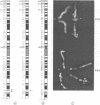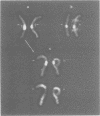Abstract
A duplication of the sub-bands 1q42.11 and 1q42.12 was found in a boy and his mother. The proband has short stature (around the 10th centile) but a normal phenotype and psychomotor development. His mother is also asymptomatic. We found 30 published cases of normal subjects with an imbalance of autosomal euchromatic material. In these cases the imbalance involved either only one G positive band or a G positive and a G negative band. Thus the absence of a phenotypic effect cannot always be ascribed to the deficiency in the G positive bands of coding DNA. Moreover, in some cases, the method of transmission of the chromosome abnormality was such that an imprinting effect could be postulated.
Full text
PDF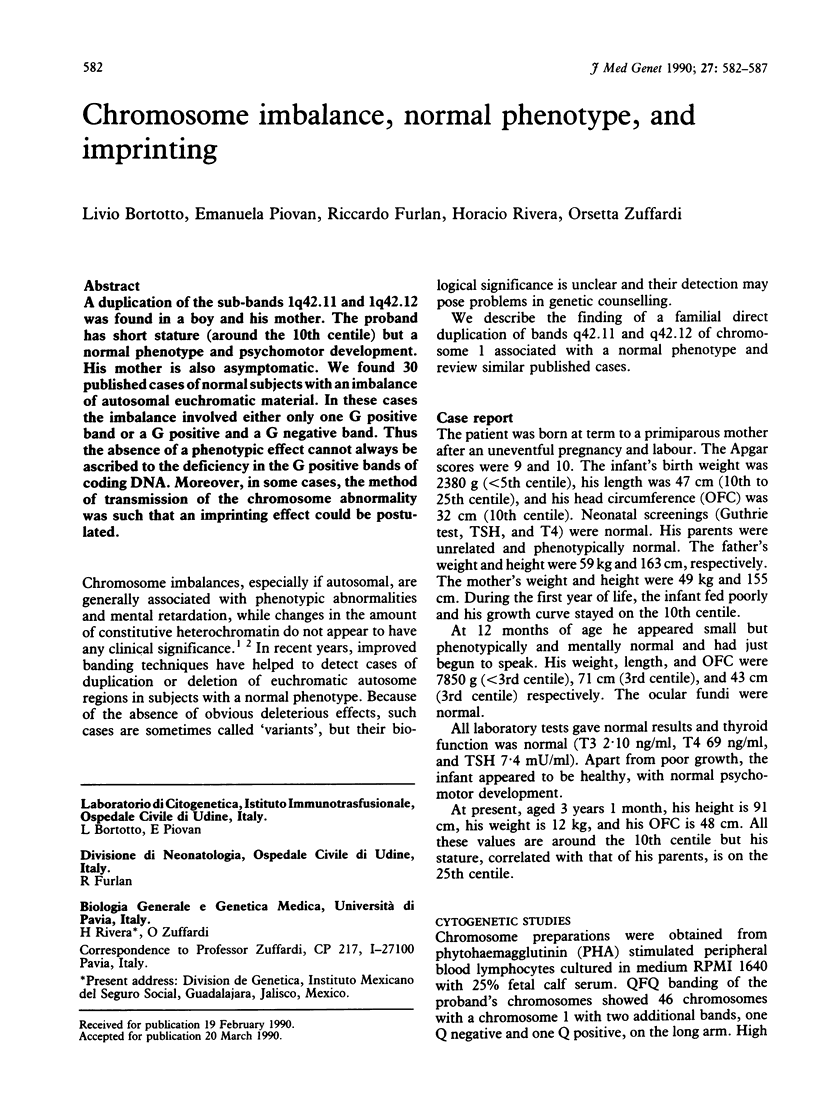
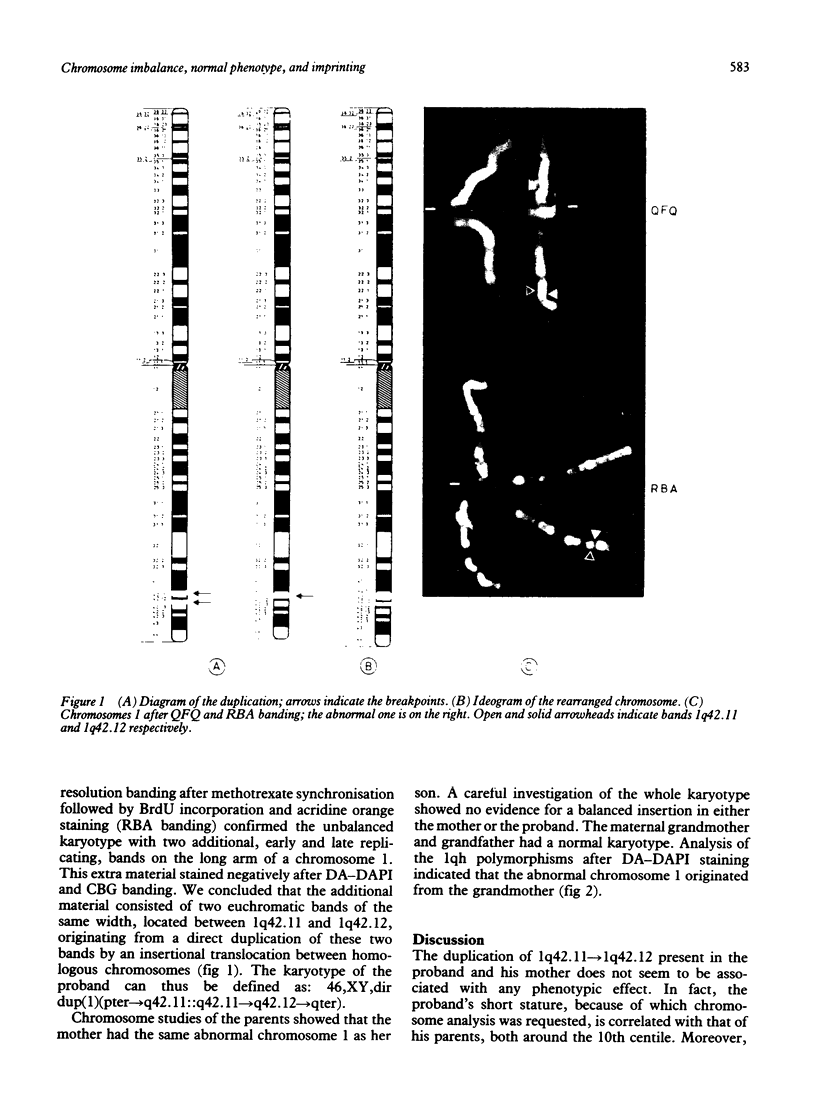
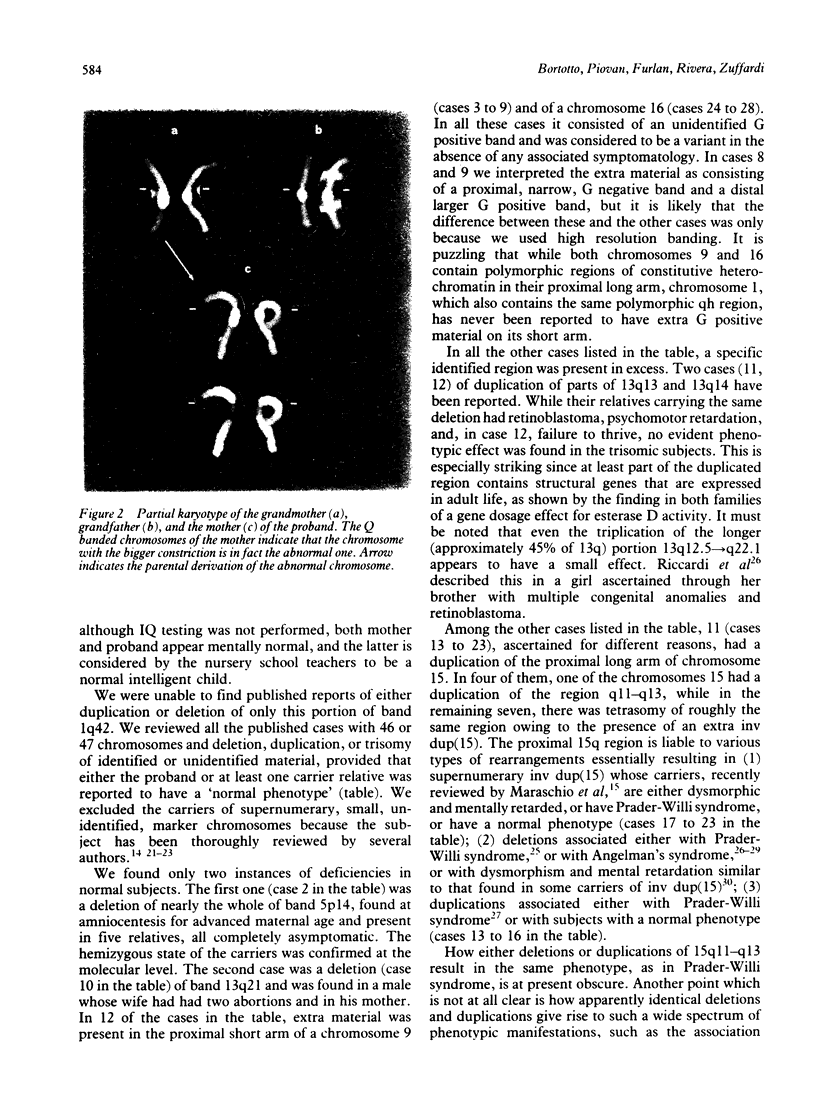
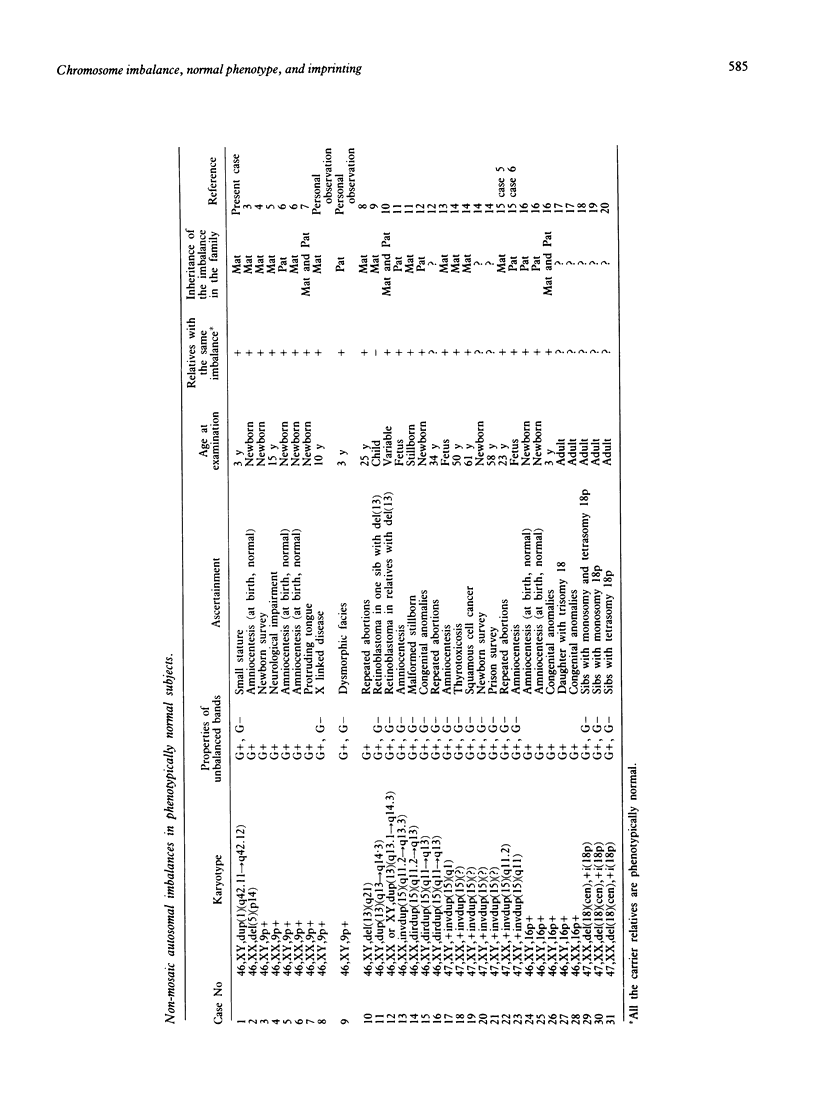
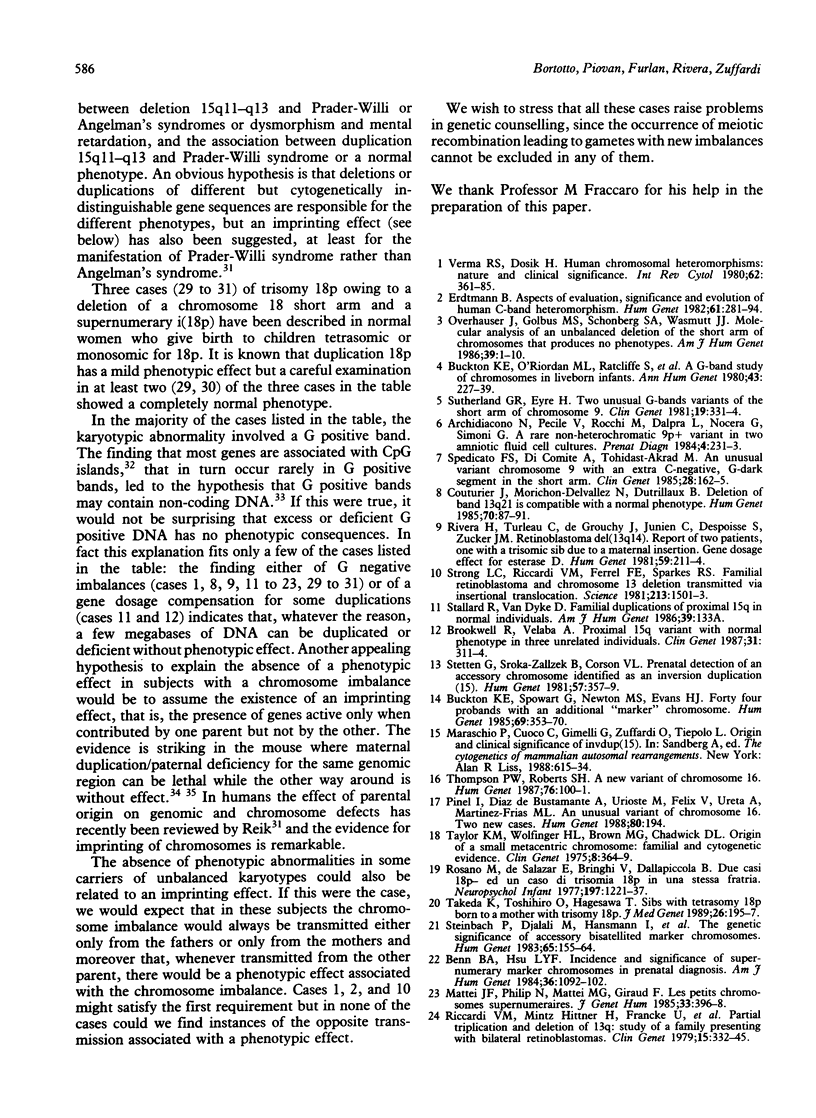
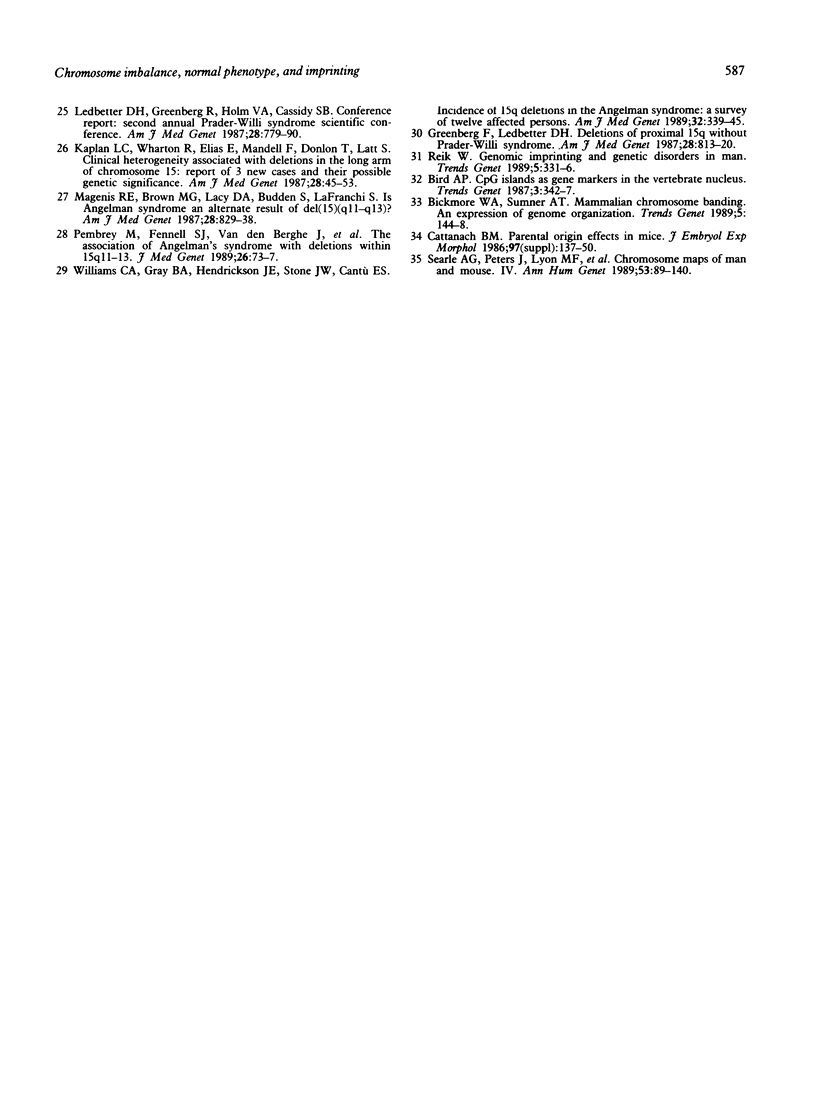
Images in this article
Selected References
These references are in PubMed. This may not be the complete list of references from this article.
- Archidiacono N., Pecile V., Rocchi M., Dalpra L., Nocera G., Simoni G. A rare non-heterochromatic 9p+ variant in two amniotic fluid cell cultures. Prenat Diagn. 1984 May-Jun;4(3):231–233. doi: 10.1002/pd.1970040313. [DOI] [PubMed] [Google Scholar]
- Benn P. A., Hsu L. Y. Incidence and significance of supernumerary marker chromosomes in prenatal diagnosis. Am J Hum Genet. 1984 Sep;36(5):1092–1102. [PMC free article] [PubMed] [Google Scholar]
- Bickmore W. A., Sumner A. T. Mammalian chromosome banding--an expression of genome organization. Trends Genet. 1989 May;5(5):144–148. doi: 10.1016/0168-9525(89)90055-3. [DOI] [PubMed] [Google Scholar]
- Brookwell R., Veleba A. Proximal 15q variant with normal phenotype in three unrelated individuals. Clin Genet. 1987 May;31(5):311–314. doi: 10.1111/j.1399-0004.1987.tb02814.x. [DOI] [PubMed] [Google Scholar]
- Buckton K. E., O'Riordan M. L., Ratcliffe S., Slight J., Mitchell M., McBeath S., Keay A. J., Barr D., Short M. A G-band study of chromosomes in liveborn infants. Ann Hum Genet. 1980 Jan;43(3):227–239. doi: 10.1111/j.1469-1809.1980.tb01556.x. [DOI] [PubMed] [Google Scholar]
- Buckton K. E., Spowart G., Newton M. S., Evans H. J. Forty four probands with an additional "marker" chromosome. Hum Genet. 1985;69(4):353–370. doi: 10.1007/BF00291656. [DOI] [PubMed] [Google Scholar]
- Cattanach B. M. Parental origin effects in mice. J Embryol Exp Morphol. 1986 Oct;97 (Suppl):137–150. [PubMed] [Google Scholar]
- Couturier J., Morichon-Delvallez N., Dutrillaux B. Deletion of band 13q21 is compatible with normal phenotype. Hum Genet. 1985;70(1):87–91. doi: 10.1007/BF00389468. [DOI] [PubMed] [Google Scholar]
- Erdtmann B. Aspects of evaluation, significance, and evolution of human C-band heteromorphism. Hum Genet. 1982;61(4):281–294. doi: 10.1007/BF00276592. [DOI] [PubMed] [Google Scholar]
- Greenberg F., Ledbetter D. H. Deletions of proximal 15q without Prader-Willi syndrome. Am J Med Genet. 1987 Dec;28(4):813–820. doi: 10.1002/ajmg.1320280405. [DOI] [PubMed] [Google Scholar]
- Kaplan L. C., Wharton R., Elias E., Mandell F., Donlon T., Latt S. A. Clinical heterogeneity associated with deletions in the long arm of chromosome 15: report of 3 new cases and their possible genetic significance. Am J Med Genet. 1987 Sep;28(1):45–53. doi: 10.1002/ajmg.1320280107. [DOI] [PubMed] [Google Scholar]
- Magenis R. E., Brown M. G., Lacy D. A., Budden S., LaFranchi S. Is Angelman syndrome an alternate result of del(15)(q11q13)? Am J Med Genet. 1987 Dec;28(4):829–838. doi: 10.1002/ajmg.1320280407. [DOI] [PubMed] [Google Scholar]
- Mattei J. F., Philip N., Mattei M. G., Giraud F. Les petits chromosomes surnuméraires. J Genet Hum. 1985 Dec;33(5):389–396. [PubMed] [Google Scholar]
- Overhauser J., Golbus M. S., Schonberg S. A., Wasmuth J. J. Molecular analysis of an unbalanced deletion of the short arm of chromosome 5 that produces no phenotype. Am J Hum Genet. 1986 Jul;39(1):1–10. [PMC free article] [PubMed] [Google Scholar]
- Pembrey M., Fennell S. J., van den Berghe J., Fitchett M., Summers D., Butler L., Clarke C., Griffiths M., Thompson E., Super M. The association of Angelman's syndrome with deletions within 15q11-13. J Med Genet. 1989 Feb;26(2):73–77. doi: 10.1136/jmg.26.2.73. [DOI] [PMC free article] [PubMed] [Google Scholar]
- Pinel I., Diaz de Bustamante A., Urioste M., Felix V., Ureta A., Martinez-Frías M. L. An unusual variant of chromosome 16. Two new cases. Hum Genet. 1988 Oct;80(2):194–194. doi: 10.1007/BF00702870. [DOI] [PubMed] [Google Scholar]
- Reik W. Genomic imprinting and genetic disorders in man. Trends Genet. 1989 Oct;5(10):331–336. doi: 10.1016/0168-9525(89)90138-8. [DOI] [PubMed] [Google Scholar]
- Riccardi V. M., Hittner H. M., Francke U., Pippin S., Holmquist G. P., Kretzer F. L., Ferrell R. Partial triplication and deletion of 13q: study of a family presenting with bilateral retinoblastomas. Clin Genet. 1979 Apr;15(4):332–345. doi: 10.1111/j.1399-0004.1979.tb01743.x. [DOI] [PubMed] [Google Scholar]
- Rivera H., Turleau C., de Grouchy J., Junien C., Despoisse S., Zucker J. M. Retinoblastoma-del(13q14): report of two patients, one with a trisomic sib due to maternal insertion. Gene-dosage effect for esterase D. Hum Genet. 1981;59(3):211–214. doi: 10.1007/BF00283666. [DOI] [PubMed] [Google Scholar]
- Searle A. G., Peters J., Lyon M. F., Hall J. G., Evans E. P., Edwards J. H., Buckle V. J. Chromosome maps of man and mouse. IV. Ann Hum Genet. 1989 May;53(Pt 2):89–140. doi: 10.1111/j.1469-1809.1989.tb01777.x. [DOI] [PubMed] [Google Scholar]
- Second Annual Prader-Willi Syndrome Scientific Conference. Houston, June 17, 1987. Proceedings and abstracts. Am J Med Genet. 1987 Dec;28(4):779–924. doi: 10.1002/ajmg.1320280402. [DOI] [PubMed] [Google Scholar]
- Spedicato F. S., Di Comite A., Tohidast-Akrad M. An unusual variant chromosome 9 with an extra C-negative, G-dark segment in the short arm. Clin Genet. 1985 Aug;28(2):162–165. doi: 10.1111/j.1399-0004.1985.tb00377.x. [DOI] [PubMed] [Google Scholar]
- Steinbach P., Djalali M., Hansmann I., Kattner E., Meisel-Stosiek M., Probeck H. D., Schmidt A., Wolf M. The genetic significance of accessory bisatellited marker chromosomes. Hum Genet. 1983;65(2):155–164. doi: 10.1007/BF00286654. [DOI] [PubMed] [Google Scholar]
- Stetten G., Sroka-Zaczek B., Corson V. L. Prenatal detection of an accessory chromosome identified as an inversion duplication (15). Hum Genet. 1981;57(4):357–359. doi: 10.1007/BF00281684. [DOI] [PubMed] [Google Scholar]
- Strong L. C., Riccardi V. M., Ferrell R. E., Sparkes R. S. Familial retinoblastoma and chromosome 13 deletion transmitted via an insertional translocation. Science. 1981 Sep 25;213(4515):1501–1503. doi: 10.1126/science.7280668. [DOI] [PubMed] [Google Scholar]
- Sutherland G. R., Eyre H. Two unusual G-band variants of the short arm of chromosome 9. Clin Genet. 1981 May;19(5):331–334. doi: 10.1111/j.1399-0004.1981.tb00719.x. [DOI] [PubMed] [Google Scholar]
- Takeda K., Okamura T., Hasegawa T. Sibs with tetrasomy 18p born to a mother with trisomy 18p. J Med Genet. 1989 Mar;26(3):195–197. doi: 10.1136/jmg.26.3.195. [DOI] [PMC free article] [PubMed] [Google Scholar]
- Taylor K. M., Wolfinger H. L., Brown M. G., Chadwick D. L. Origin of a small metacentric chromosome: familial and cytogenic evidence. Clin Genet. 1975 Nov;8(5):364–369. doi: 10.1111/j.1399-0004.1975.tb01515.x. [DOI] [PubMed] [Google Scholar]
- Thompson P. W., Roberts S. H. A new variant of chromosome 16. Hum Genet. 1987 May;76(1):100–101. doi: 10.1007/BF00283058. [DOI] [PubMed] [Google Scholar]
- Verma R. S., Dosik H. Human chromosomal heteromorphisms: nature and clinical significance. Int Rev Cytol. 1980;62:361–333. doi: 10.1016/s0074-7696(08)61903-8. [DOI] [PubMed] [Google Scholar]
- Williams C. A., Gray B. A., Hendrickson J. E., Stone J. W., Cantú E. S. Incidence of 15q deletions in the Angelman syndrome: a survey of twelve affected persons. Am J Med Genet. 1989 Mar;32(3):339–345. doi: 10.1002/ajmg.1320320313. [DOI] [PubMed] [Google Scholar]



